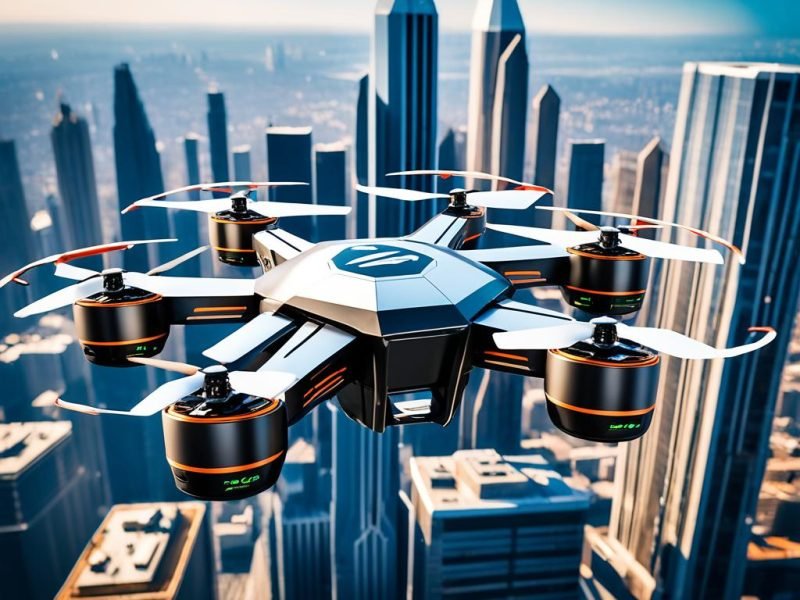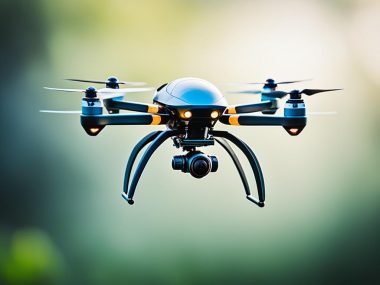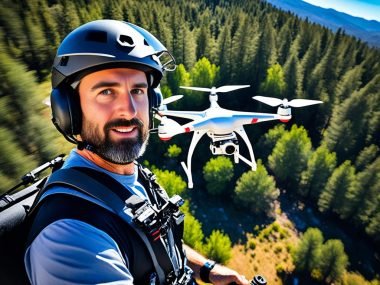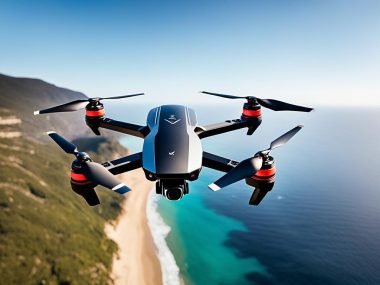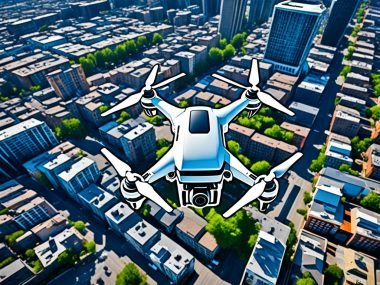Imagine a world where getting your package in 30 minutes is normal. This future is where drone delivery technology changes the game, reaching the last stretch with ease. While delivery trucks cover the ground, drones glide above, moving fast and smart even in tough weather. The future of drone deliveries has moved from dream to near-reality. Yet, the journey from idea to real-world practice has been full of surprises, with safety and innovation often at odds.
I’ve been following these changes closely. I’ve seen how companies like Wing Aviation LLC and UPS are bringing us closer to this new era, thanks to their official air carrier certifications. But even with these milestones, the common sight of drones bringing packages to our doorsteps is still not here. Is it due to slow regulation, tech challenges, or the complexity of adding drones into our everyday lives? Let’s dig deeper into this subject.
Key Takeaways
- Drone delivery technology has potential but faces regulatory and logistical challenges.
- Secured air carrier certificates by companies exemplify progress in the drone delivery services industry.
- The future of drone deliveries is shaped by advancements from companies like Wing Aviation LLC, UPS, and Amazon.
- Practical, widespread use of drone deliveries is still evolving amidst strict regulations.
- Innovations in drone technology continue to push the boundaries of what’s possible in delivery efficiency and reach.
Unveiling the Drone Delivery Technology Hype
Drone delivery technology is getting a lot of attention from shoppers and companies alike. It’s changing how we think about moving goods in the future. Drones offer fast and efficient deliveries, opening new doors for companies in the delivery world. Every successful drone test gets us closer to changing how we get our packages.
What Drone Delivery Technology Is and How It Works
Drone delivery uses UAVs to send items to customers from stores or warehouses. These drones are designed to be stable and precise, aiming to use the skies for deliveries. The accuracy of drones makes them stand out, possibly making deliveries quicker and cheaper than by car or truck.
The Rise of Drone Delivery Services: From Concept to Reality
Drone delivery has moved from just an idea to a real service thanks to tech advances. Regulations were a challenge, but now there’s support for drone couriers. The United States is leading with specific certifications, helping drone delivery grow.
The Innovators Behind Drone Delivery: Companies Leading the Charge
Companies like Wing Aviation LLC and UPS are at the forefront, holding the needed certificates. They have shown that drone delivery can work through their projects. Walmart joining the drone world is a big deal, showing these services can grow. The competition is heating up as companies test and improve their drone services.
These companies are working on making drone delivery a common part of our lives. Success will depend on following regulations, winning over customers, and improving the technology. The future of drone deliveries looks bright as companies push forward.
A Glimpse into the Future of Drone Deliveries
The future of package delivery is exciting, thanks to drones. These unmanned aerial vehicles come with big benefits. They make deliveries faster and can even save lives. Soon, drones could be a common sight, flying items directly to our doorsteps. This is especially true for delivering medicine to hard-to-reach places.

Think about the time savings in healthcare, where quick delivery can save lives. Drones can fly over traffic to deliver urgent medical supplies. They can reach remote areas where traditional delivery can’t go. This makes them perfect for delivering vital health items quickly.
My excitement grows as I think about how drones will change supply chains. Here’s how drone deliveries compare to traditional methods:
| Delivery Method | Time Efficiency | Cost Effectiveness | Environmental Impact | Reach |
|---|---|---|---|---|
| Ground Transportation | Variable – dependent on traffic and distance | Moderate – fuel and labor costs | Higher emissions | Limited by terrain and infrastructure |
| Traditional Air Delivery | Fast over long distances | High – fuel and operational costs | Significant carbon footprint | Dependent on airports and landing strips |
| Drone Deliveries | Expedient with direct routes | Lower – electric, fewer human resources | Reduced environmental impact | High – minimal terrain restrictions |
Drones could lead a logistics revolution. They offer a new level of convenience and connection. Soon, our skies might be filled with drones, marking progress. I can’t wait to see it happen.
Drone Delivery Services Across the Globe
Looking into drone delivery success stories shows big changes worldwide. This is especially true in rural healthcare and retail goods. As we check out areas where drones lead the way, we see their benefits and rules. It’s about linking potential markets with international regulations.
Case Studies: Successful Drone Deliveries in Action
Matternet and UNICEF made a big step with drones in Malawi, showing how drones save lives. Zipline also shows this in Rwanda and Ghana, bringing medical supplies where they’re hard to get.
For shopping, Walmart in Dallas-Fort Worth shows drones can deliver many things, like meds and food. This tells us that drones fit well into delivery systems, for both special and common needs.
International Regulations Shaping Drone Delivery Practices
Around the world, drone delivery laws can help or hinder drone use in shipping. Countries take different paths, showing a mix of rules. The EU’s rules versus Asia’s show the hurdles companies face going global.
| Region | Regulatory Environment | Impact on Drone Deliveries |
|---|---|---|
| European Union (EU) | Uniform Aviation Safety Framework | Encourages cross-border operations within the EU |
| Africa | Varied; more permissive in certain countries like Rwanda | Enables rapid deployment for healthcare logistics |
| Asia | Diverse; highly regulated in some countries, more lenient in others | Influences market entry strategy and operational scope |
| North America | Progressive with FAA regulations; commercial operations advancing | Promotes innovation and tests in controlled environments |
Growing drone delivery services need a balance. Innovation is key, but so is safety. With nations working together, we might get a global drone system. This could unlock drones’ full delivery power.
Are Drone Deliveries Real? Separating Facts from Fiction
In exploring drone deliveries, there’s a clear gap between hopes and current reality. The sector faces big challenges. These include changing regulations, technical issues, and people’s concerns. Despite drones’ potential, they struggle with range and weather issues. Their use near military areas also needs careful planning.
Public views on drone deliveries are mixed. Many are excited about fast, aerial deliveries. But, worries about privacy and safety also exist. In cities like Phoenix, the success of drones depends on winning public support.
Drone deliveries are not widespread yet. But, they’re proving valuable in rural healthcare and emergencies. Here, drones can quickly reach places cars cannot. This shows how drones could eventually become part of our daily lives. Our acceptance of drones will grow with technology and regulations.

